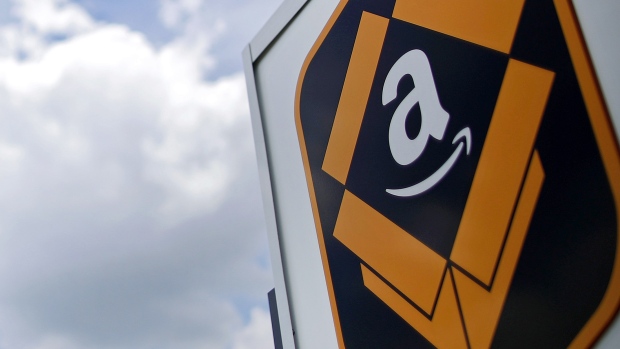Apr 25, 2019
Amazon's profit surges on cloud computing, advertising gains
, Bloomberg News

Amazon.com Inc. reported quarterly profit that exceeded analysts’ estimates, demonstrating the company’s focus on cloud-computing, advertising, and other high-margin businesses continues to pay off.
Still, the e-commerce giant’s forecasts for the current quarter fell short of projections, tempering enthusiasm and raising the specter that Amazon is in for another cycle of high spending to reinvigorate growth. Shares were little changed in extended trading after the results.
First-quarter earnings were US$7.09 a share, the Seattle-based company said Thursday in a statement. Analysts had projected US$4.67 a share. Revenue gained 17 per cent from a year earlier to US$59.7 billion -- in line with the average estimate of analysts compiled by Bloomberg.
The retailer has been buoyed in recent quarters by increasing sales in cloud-computing, digital advertising, and services for third-party sellers on Amazon’s retail site, all of which are more profitable than the company’s central online business.
“The bottom line is almost doubling,” said Brent Thill, an analyst at Jefferies LLC. “And everyone thought this was the story that could just grow and grow and not produce profits.”
Amazon’s gross margin in the period ended March 31 was a record 43 per cent.
While profit was greater than the Street expected in the first quarter, Amazon’s forecast of operating income of as much as US$3.6 billion in the current period fell short of estimates, signaling the potential for spending increases.
Chief Financial Officer Brian Olsavsky said the company overestimated how much it would spend on hiring in the first quarter. Those costs, he said, "will be going up in the back half of the year.”
Technology and content expenses, which is primarily payroll for research-and-development work, and the cost to stow, pack and ship inventory, grew at a slower pace than in recent quarters. Amazon’s headcount increased 12 per cent to 630,600 employees.
“They’ve kind of reaped the benefit of prior investment, but they caught up now,” Aaron Kessler, an analyst at Raymond James, said before the company’s results were posted.
Chief Executive Officer Jeff Bezos for years pumped most of the cash generated from Amazon’s operations back into new initiatives. That led to prodigious revenue growth, but little income left over for investors. Now, with quarterly sales growth of less than 20 per cent for the first time since 2015, shareholders are seeking greater profit, much of which comes from the Amazon Web Services division, which leads in the growing market for selling computing power and data storage.
AWS revenue gained almost 42 per cent from a year earlier to US$7.7 billion. The unit’s operating income was US$2.2 billion, half of Amazon’s total.
Sales in Amazon’s “other” segment, which is mostly advertising, increased 34 per cent, to 2.72 billion. The company’s digital advertising franchise has grown into the third largest in the U.S., trailing only Alphabet Inc.’s Google and Facebook Inc., EMarketer estimates.
Growth in those segments means more predictable revenue, a contrast to Amazon’s retail business. That has given investors confidence the company can continue to expand its profitability, even as fellow technology giants like Alphabet and Facebook see their margins narrow, Thill said.
Amazon also kept a lid on shipping costs, a key line item for a company best known for delivering packages, which totaled US$7.3 billion in the quarter. That’s a gain of 21 per cent from a year earlier, but well below the pace of the increases seen in recent years.
The company has started encouraging people who pay for Amazon Prime membership and its free two-day shipping perks to group their orders for a single day. That helps Amazon consolidate expensive deliveries. Olsavsky said the company would spend US$800 million in the current quarter to get packages to Prime members in one day from two.
Losses narrowed considerably in Amazon’s international unit. The company, which had been spending heavily in a bid to grab market share in India’s emerging online retail sector, was dealt a setback by regulations that limit the ability of foreign marketplace operators to take stakes in local merchants or ink exclusive deals with local sellers.
Amazon’s international operating loss came in at US$90 million compared with US$622 million in the period a year earlier.
The shares closed at US$1,902.25 in New York and have jumped 27 per cent this year.







